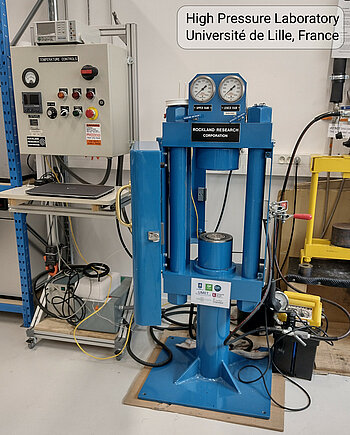Piston cylinder press
Piston-cylinder press
The lab holds a piston-cylinder press. This apparatus, with a solid-medium sample confinement, allows experiments up to 2.2 GPa and temperatures of 2200°C on millimeter-size samples. These conditions of pressure and temperature correspond to approximately 70 km depth in the Earth mantle.
The apparatus is used for
- the synthesis of innovative materials,
- the synthesis of materials with a controlled composition and microstructure,
- the synthesis of synthetic rocks,
- the sintering of natural or synthetic rocks.
The apparatus is used by researchers and students, alone or as collaborations. It is also used to train students such undergraduate or master interns as well as PhD students. It can be made available to external users on a basis of collaboration or the provision of service and technical help can be provided. Contact us for more details.
How does it work?
The press includes a main hydraulic upper ram that pushes on a pressure vessel, including a tungsten carbide (WC) core supported by concentric rings of hardened steel. The sample is inside the WC core, inside a sample assembly designed to transmit hydrostatic pressure from the WC piston, provide controlled heating of the sample and, potentially, a suitable chemical environment.
The sample is pressurized within minutes by applying a load to the hydraulic upper ram. High temperatures are reached by applying passing electric current through a cylindrical heater in the sample assembly. The heater, typically, is a cylinder of graphite.

